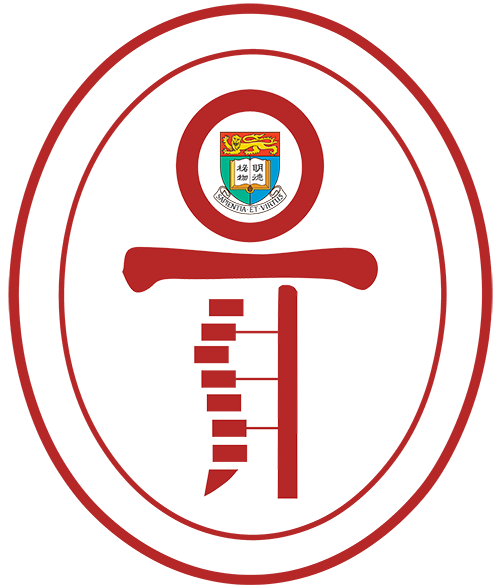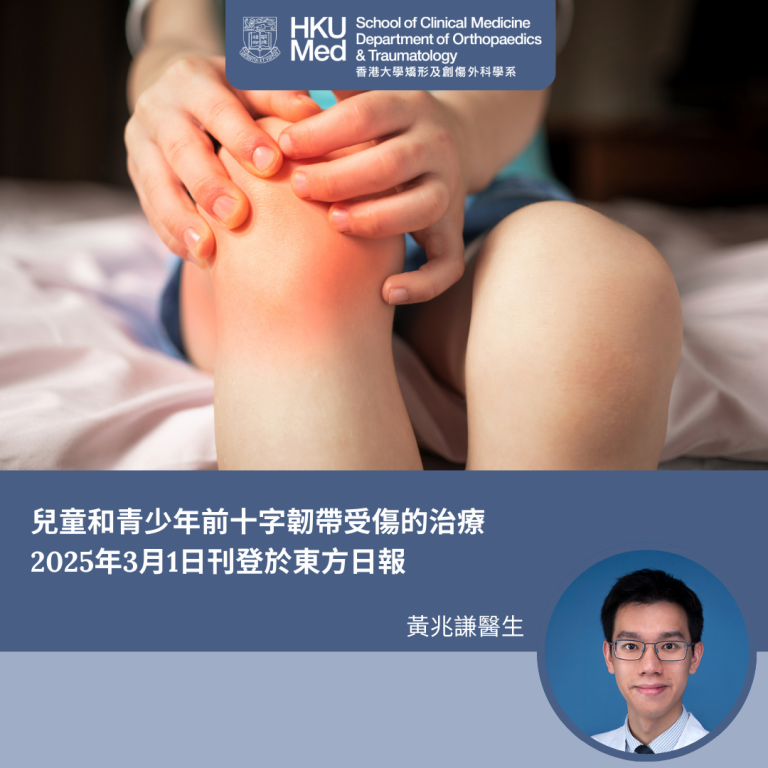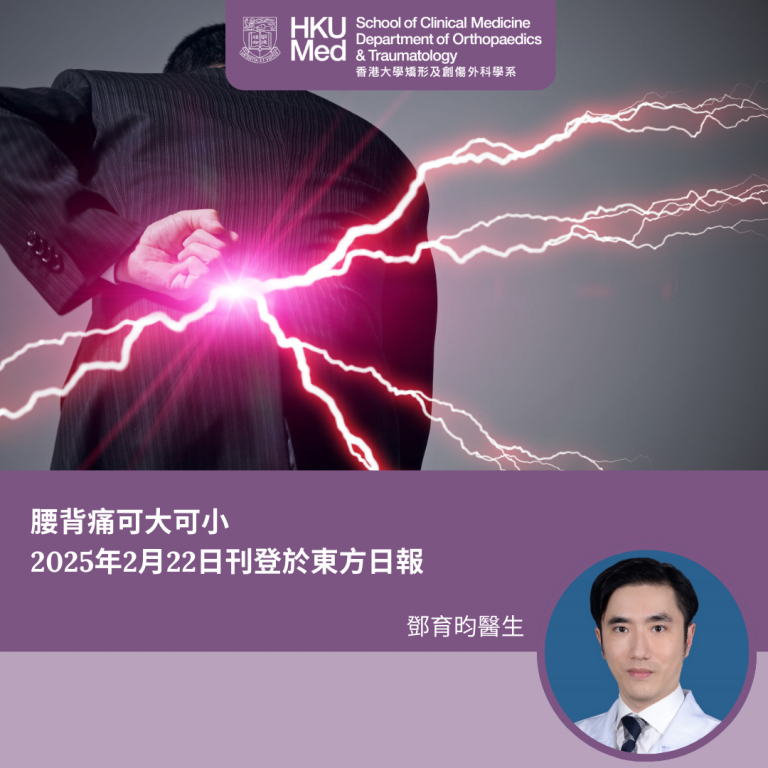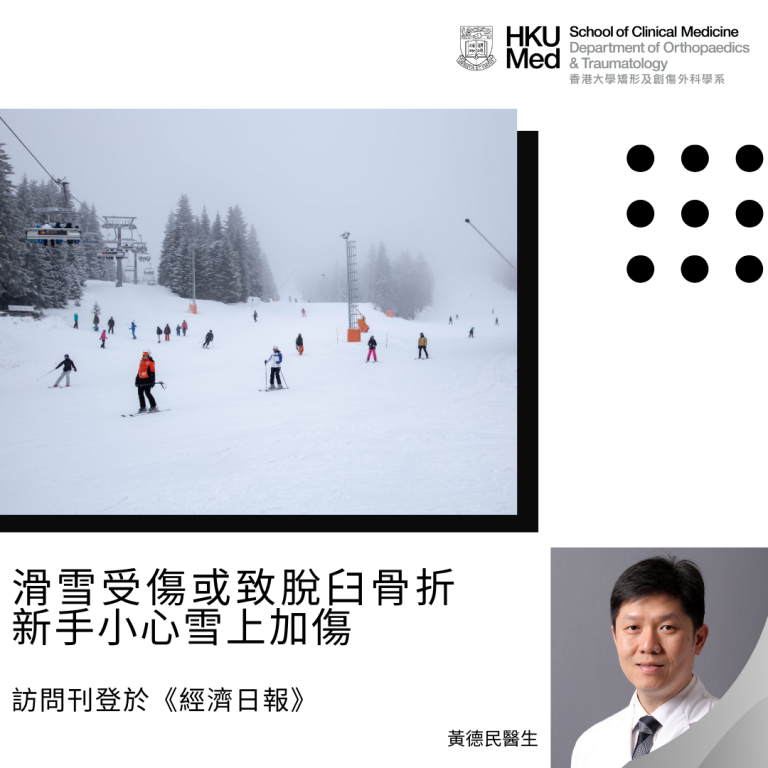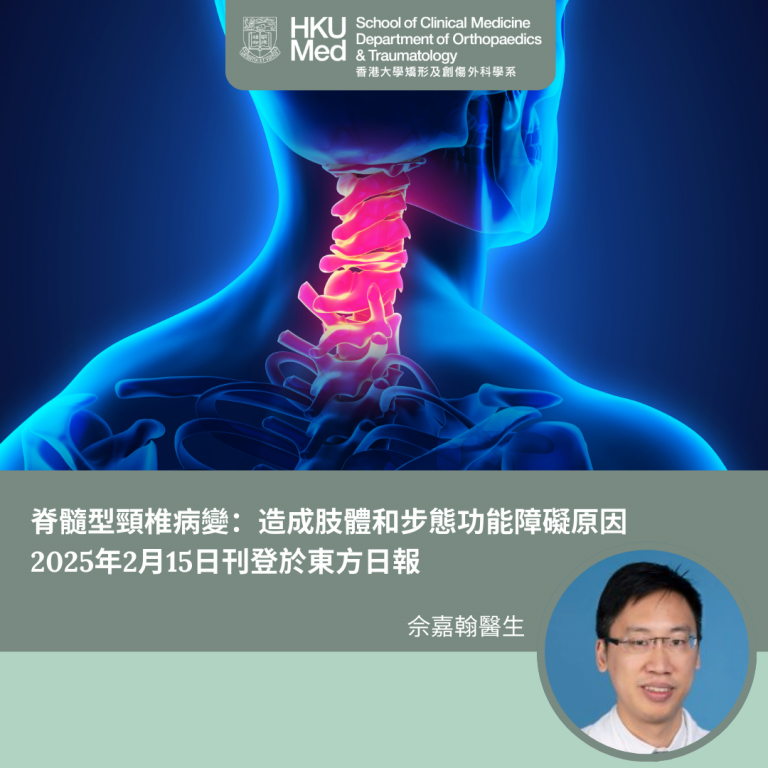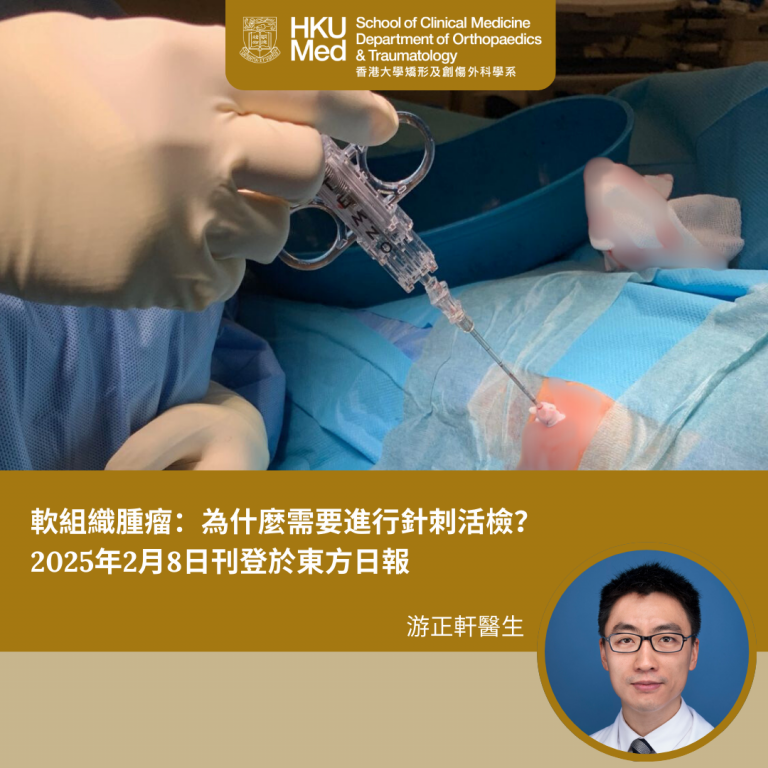黃德民醫生
香港大學李嘉誠醫學院
矯形及創傷外科學系臨床副教授
冰凍肩的正式學名是「黏連性肩關節囊炎」(adhesive capsulitis),最常發病的年齡組別是50多歲的中年人士,病人的肩周會出現發炎、不能靈活運動,甚至僵硬的狀況,故坊間一般稱之為「五十肩」或「肩周炎」。
冰凍肩分為原發性和繼發性兩種,原發性冰凍肩的成因至今未明,繼發性冰凍肩則多數與肩周部位曾有嚴重傷患(例如肩袖撕裂)有關,又或者病人因腕關節骨折而要打石膏,肩部缺乏運動,以致形成冰凍肩。此外,其他疾病如糖尿病、甲狀腺機能低下症的患者都有較高機會患上冰凍肩。值得一提的是,冰凍肩較常於單邊出現,絕少在兩側肩膀同時發病。
常見的冰凍肩徵狀包括肩關節痛、關節僵硬和肩膊活動受限,患者側睡時如壓到患肩會感到疼痛,甚至連舉高手臂、在背部搔癢等簡單動作,都會因肩膀關節僵硬而無法完成。
冰凍肩的病程可分為以下三個階段:
- 疼痛期(六星期至九個月):因關節囊發炎,導致肩周位置持續疼痛,大部分病人會因此減少肩膊活動。
- 僵硬期:病人的疼痛開始減少,但肩膊僵硬的程度加劇。
- 恢復期:肩膊的僵硬開始減退,不再感到痛楚,活動能力開始恢復。要完全回復到發病前水平,可能要六個月至兩年時間。事實上,有部分病人會感到患肩的活動能力不能回到發病前的水平。比起沒有發病的一側肩膀,患肩的活動能力亦明顯較差。
並非每位病人都會完全經歷上述三個階段。如肩膊只是疼痛,但仍能維持活動能力,醫生或會建議病人服食止痛藥和進行適當運動,肩關節便可逐漸康復。倘若肩膊已感僵硬,病人將獲安排進行家居治療或物理治療。
上述以運動為主的保守治療一般已足以應付病情,但若在接受保守治療後六個月仍沒有好轉,甚至肩膀僵硬的程度已嚴重影響日常生活,就要考慮接受「關節鏡輔助肩關節囊鬆解」或「麻醉下手法鬆解」手術。兩種手術都是以微創方式進行,病人需要接受麻醉,讓關節放鬆。手術後再配合物理治療,並保持適量的運動,就可大幅舒緩病情。
<刊載於《東方日報》,2021年9月25日>
The information contained in this website is solely for the purpose of promoting academic exchange. None of such information is intended to be for, nor shall therefore be treated as, dissemination of professional service information of doctors to the public. If you are interested in obtaining any information about the professional practice of our clinical staff members, please visit the website of HKU Health System at
https://hkuhs.med.hku.hk/en/homepage/our-professional.
© 2025 Department of Orthopaedics and Traumatology, The University of Hong Kong. All rights reserved.
The information contained in this website is solely for the purpose of promoting academic exchange. None of such information is intended to be for, nor shall therefore be treated as, dissemination of professional service information of doctors to the public. If you are interested in obtaining any information about the professional practice of our clinical staff members, please visit the website of HKU Health System at
https://hkuhs.med.hku.hk/en/homepage/our-professional.
© 2025 Department of Orthopaedics and Traumatology, The University of Hong Kong. All rights reserved.

